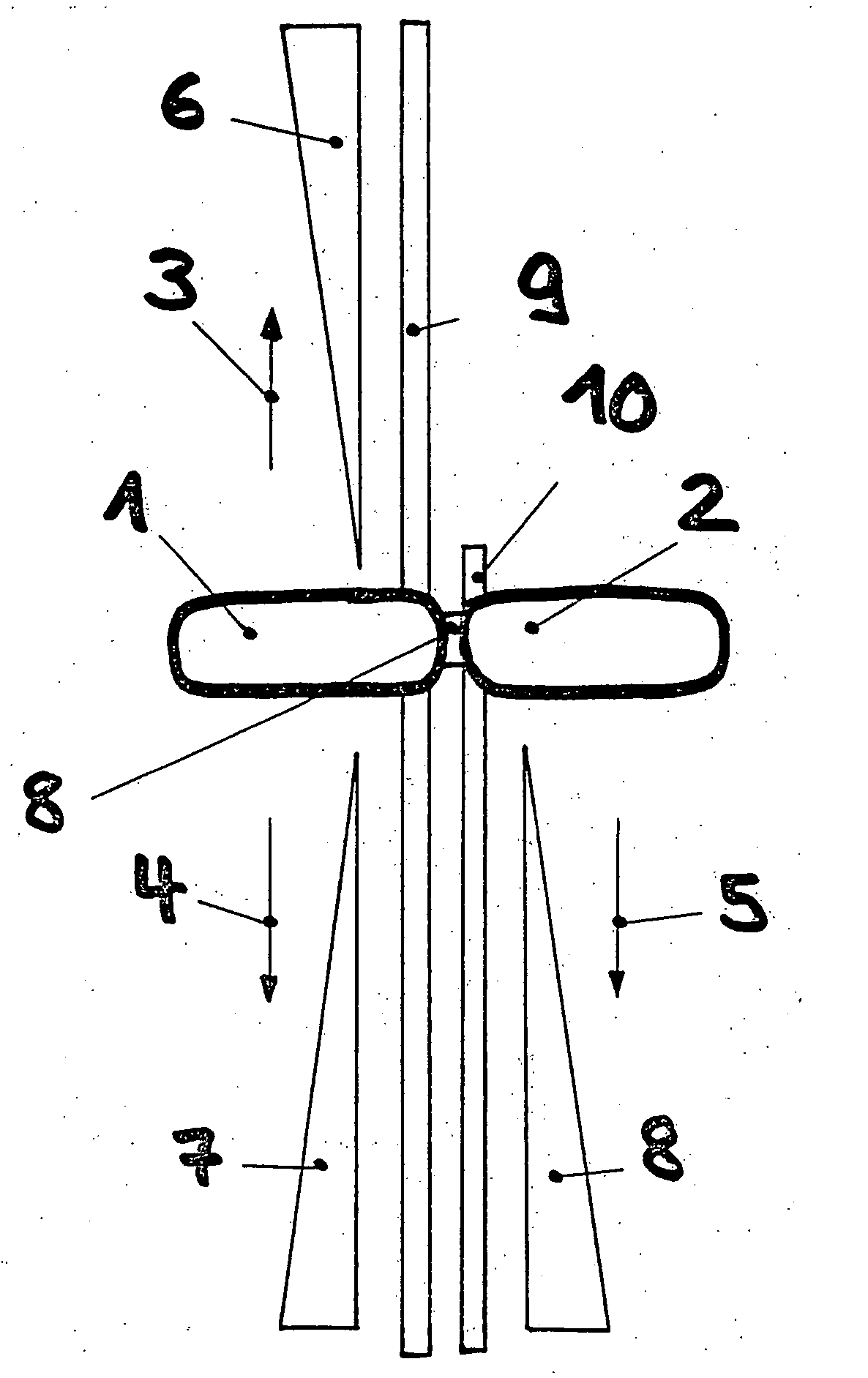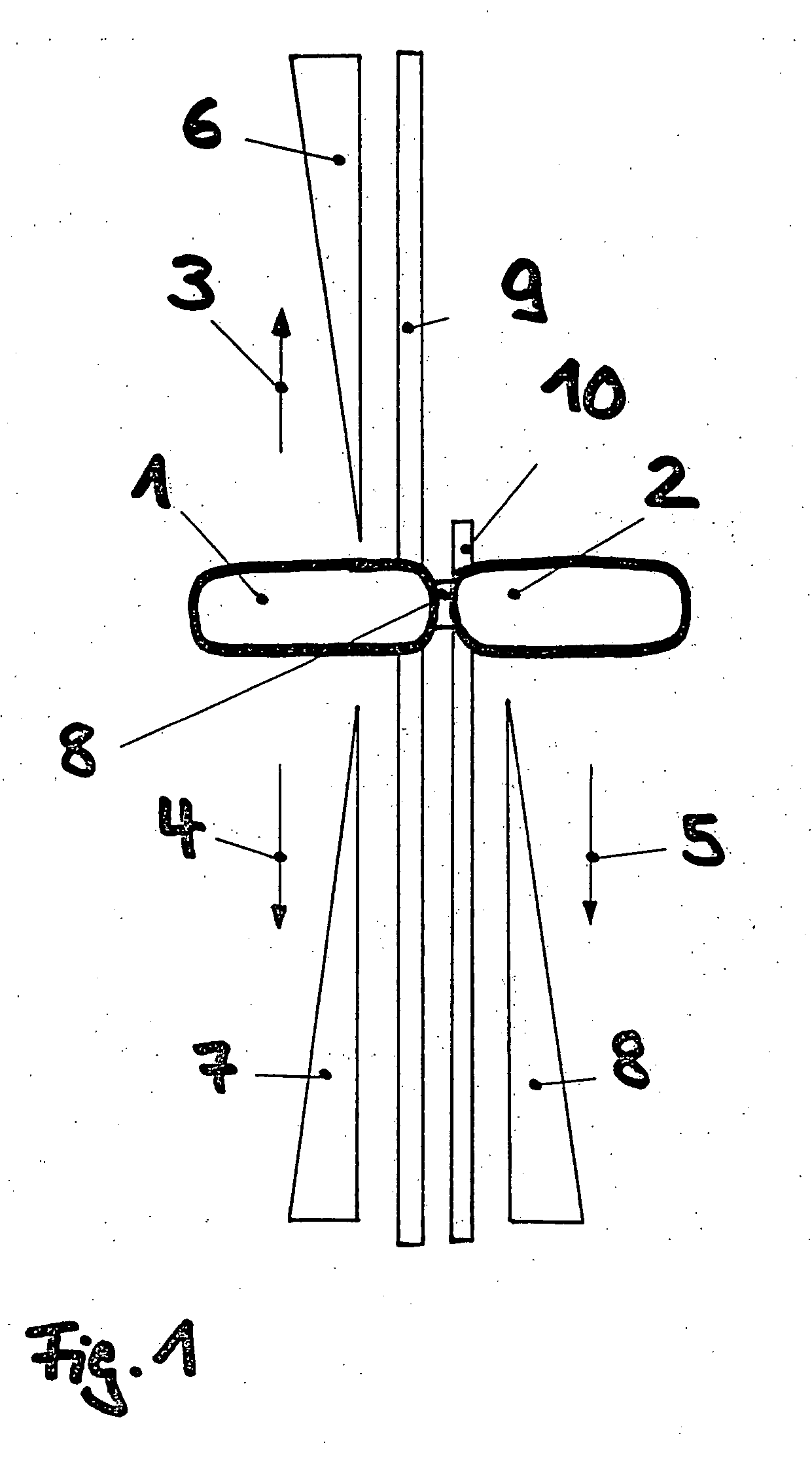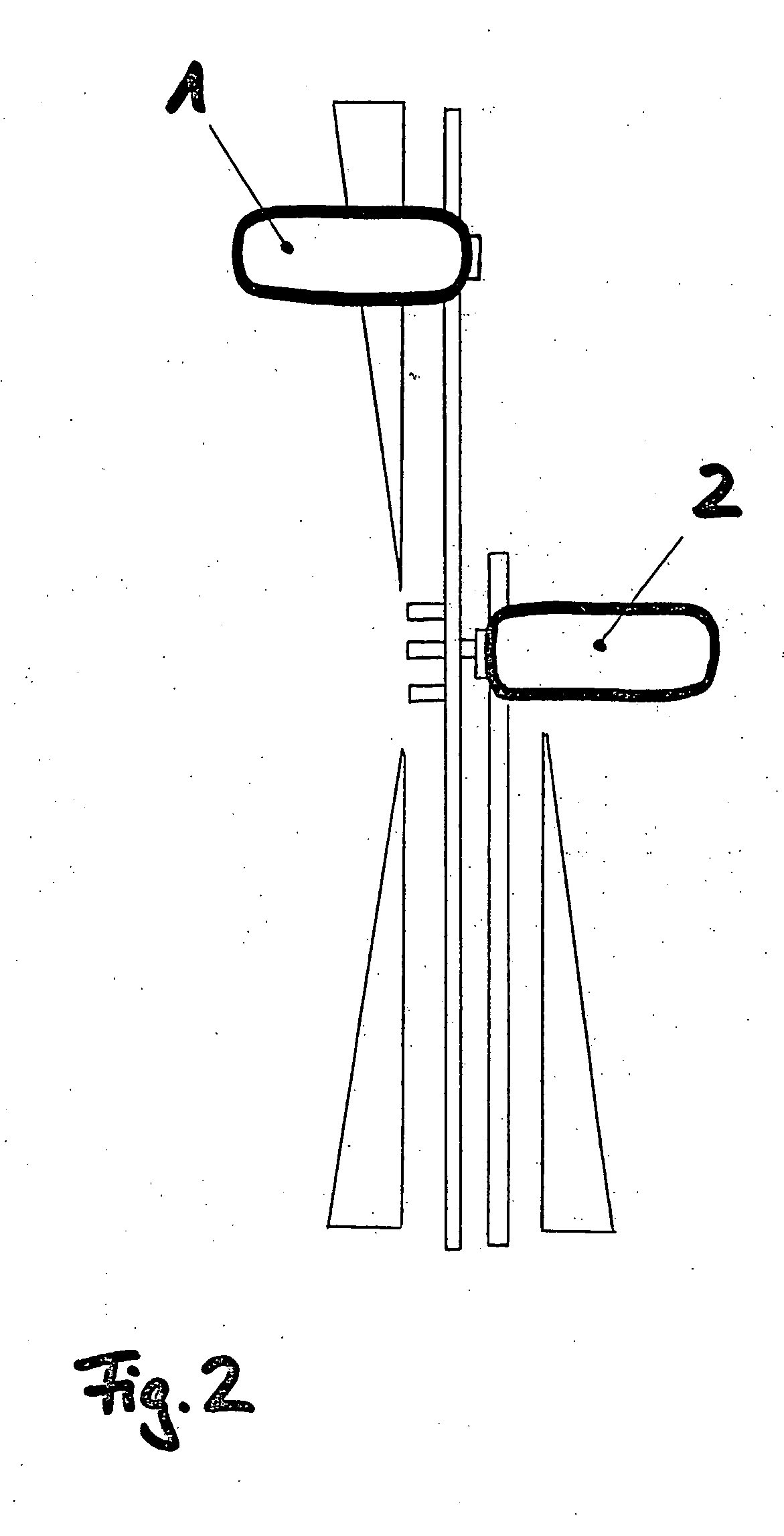Control method for acceleration and braking a vehicle
- Summary
- Abstract
- Description
- Claims
- Application Information
AI Technical Summary
Benefits of technology
Problems solved by technology
Method used
Image
Examples
Embodiment Construction
[0052]FIG. 1 shows the zero position of two operating levers 1 and 2 which are disposed in the driver's cab of a rail vehicle (locomotive) at the driver's table to move and brake the rail vehicle. A linear motion of the operating lever 1 in the direction of arrow 3 sets the tractive power, i.e. acceleration of the rail vehicle. A linear motion of the operating lever 1 in the direction of arrow 4 sets an electric brake for generating a braking effect on an electro-dynamic basis. A linear motion of the operating lever 2 in the direction of arrow 5 generates a braking effect by means of an indirectly acting compressed air brake. The increase of the set tractive power and the braking forces on the basis of the zero position, is indicated by the bars 6 to 7. Rails 9 and 10 for the operating levers 1 and 2 have locking points for setting predetermined tractive and braking forces. The operating lever 1 is provided with a so-called SiFa key and the operating lever 2 has a locomotive trigger...
PUM
 Login to View More
Login to View More Abstract
Description
Claims
Application Information
 Login to View More
Login to View More - R&D
- Intellectual Property
- Life Sciences
- Materials
- Tech Scout
- Unparalleled Data Quality
- Higher Quality Content
- 60% Fewer Hallucinations
Browse by: Latest US Patents, China's latest patents, Technical Efficacy Thesaurus, Application Domain, Technology Topic, Popular Technical Reports.
© 2025 PatSnap. All rights reserved.Legal|Privacy policy|Modern Slavery Act Transparency Statement|Sitemap|About US| Contact US: help@patsnap.com



